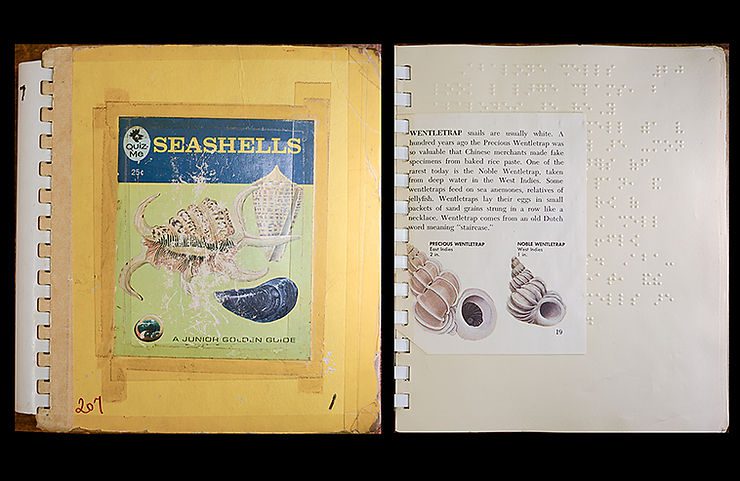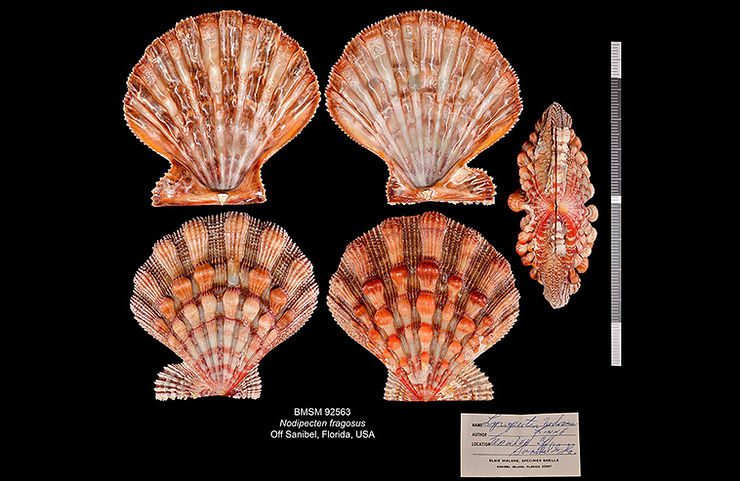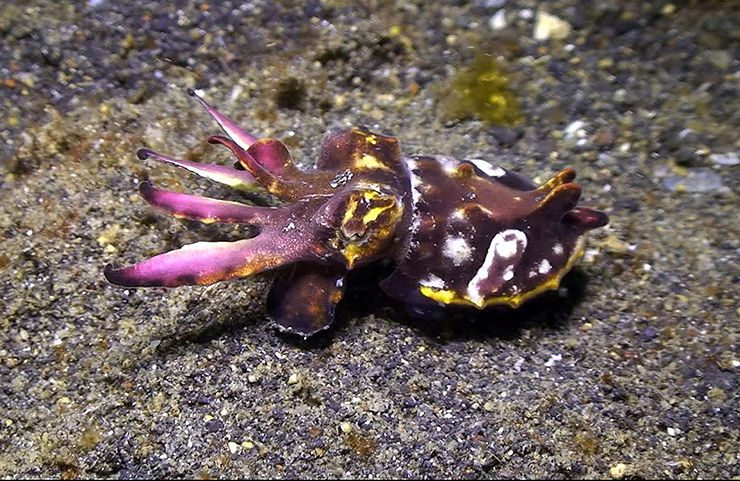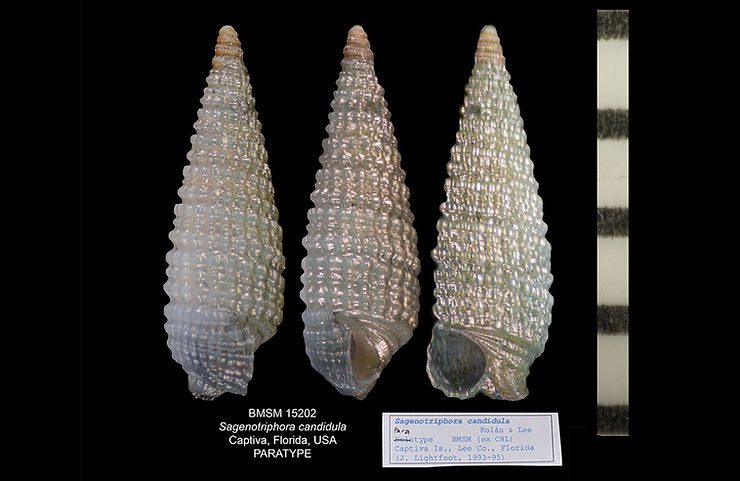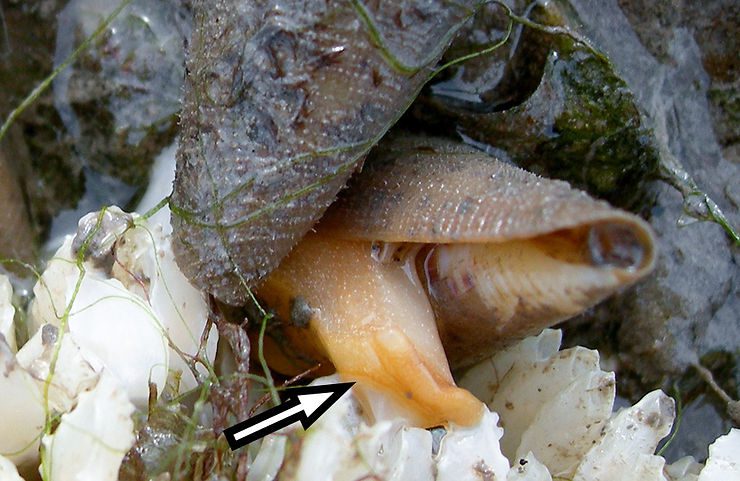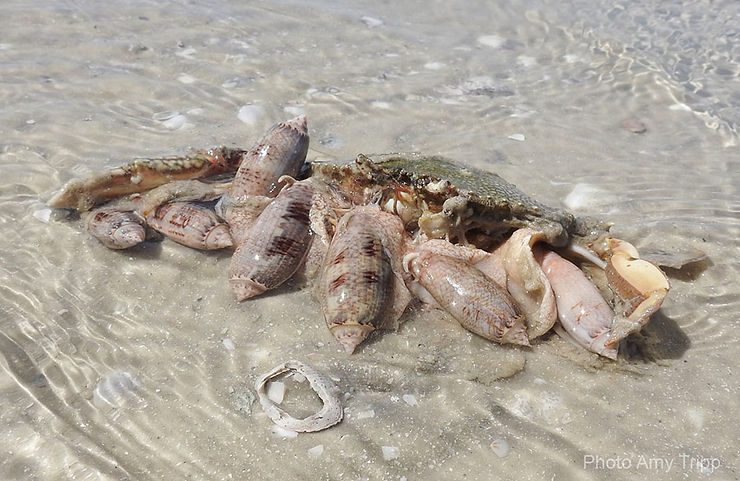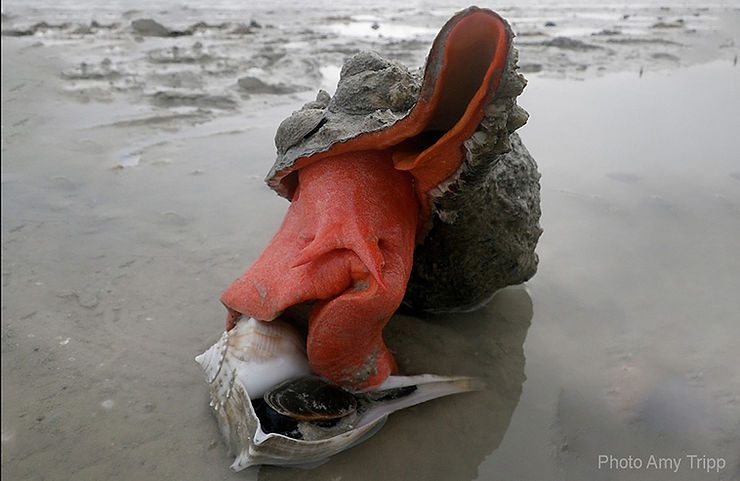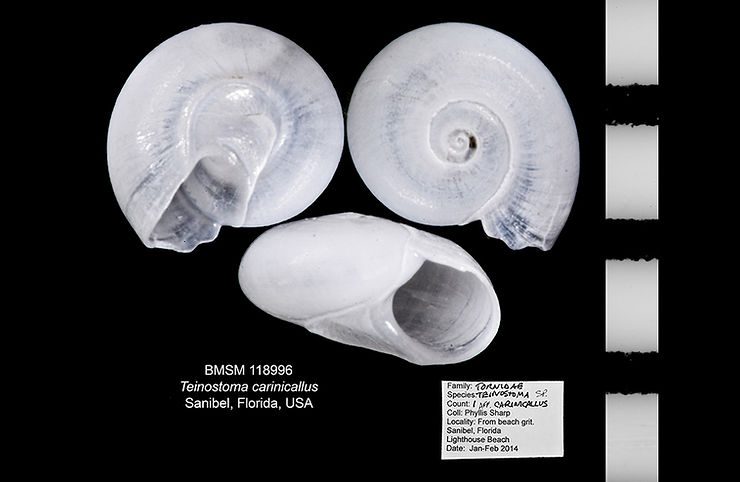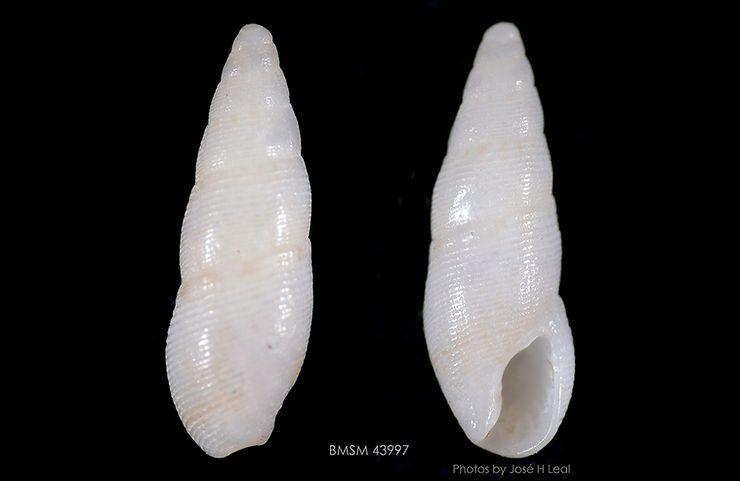
Shell of the Week: The Stearns Dove Snail
At only 5 mm (about 0.2 in inch) in maximum size, Aesopus stearnsii (Tryon, 1883), is one of the smallest members of the dove snail family Columbellidae found on the beaches of Southwest Florida. Its shell is relatively slender for the family, with the aperture (opening) spanning about 1/3 to ¼ of shell length. The shell sculpture shows very narrow, etched spiral lines. The color is cream color, usually with a faint orange-brown band just below the suture (the line separating two whorls). The ph
